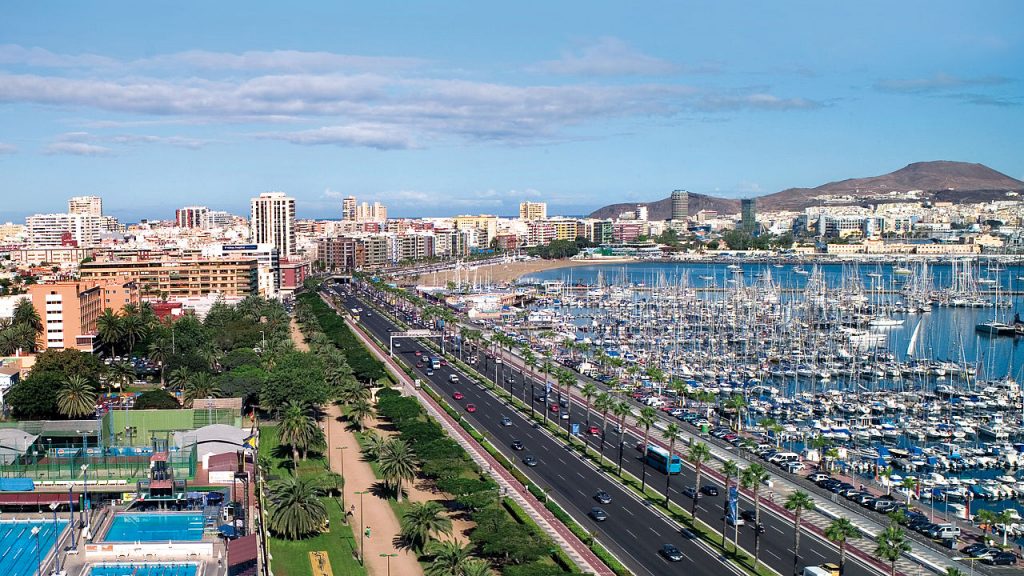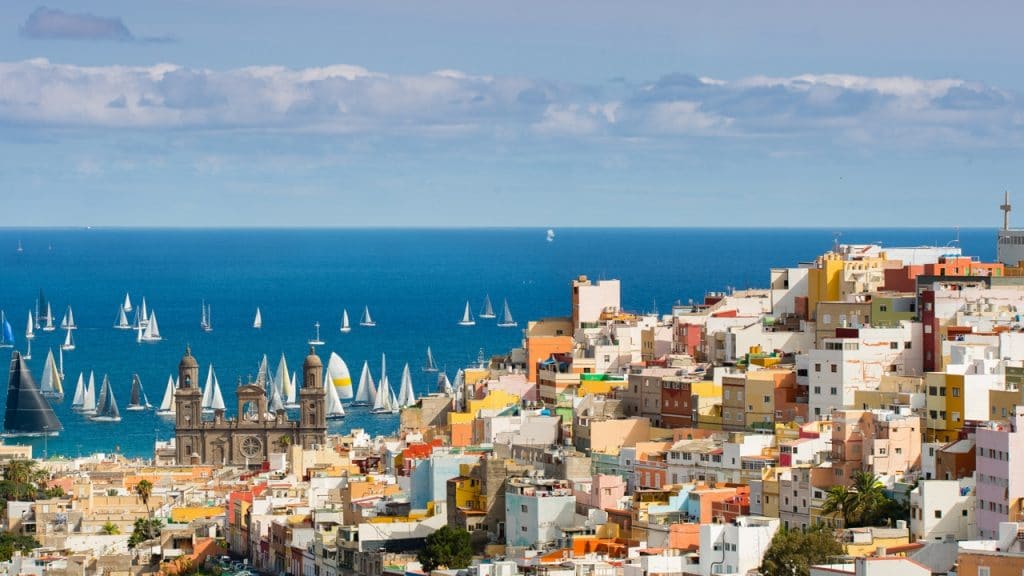The neighbourhoods, the pillars on which a contemporary city is built, make it grow, advance and evolve along with its inhabitants. There are all kinds of neighbourhoods: working class, middle class, slums, wealthy neighbourhoods, etc. The neighbourhoods (or barrios in Spanish) of Las Palmas are full of variety and cultural richness.
The city was built on the bed of the Guiniguada Ravine by the Castilian conquerors. One of the first neighbourhoods to be founded was Vegueta, a historic district of the capital.
From there, the whole city began to expand, giving rise to neighbourhoods such as Triana, Arenales and El Puerto, which were of great importance in the growth and evolution of the city.
Later, the popular neighbourhoods, also known as barriadas, began to appear on the slopes of the mountains near the Guiniguada ravine, such as San Juan, San José or San Nicolas.
Today we want to take you a little closer to the heart of the city, its neighbourhoods. We propose a review of the most important neighbourhoods, the most transcendental, the most populated and, above all, those with a popularity that has been maintained over the years.
The most important neighbourhoods of Las Palmas de Gran Canaria
Las Palmas de Gran Canaria is currently divided into 5 different districts:
- Vegueta district--South cone--Tafira
- Puerto district--Guanarteme
- Centro district
- Ciudad Alta district
- Tamaraceite-San Lorenzo-Tenoya district
Within each of these districts we can find some of the most relevant and popular neighbourhoods of the entire city.
At present, there are more than 70 districts spread throughout the city. However, we’re going to show you those that we consider to be the most important and that, therefore, you should visit in order to get to know better where this city comes from and to understand its present.
To do so, we’ve put together a ranking of the 5 most popular neighbourhoods in Las Palmas de Gran Canaria.
Vegueta

We couldn't start our ranking without this wonderful and historic neighbourhood. It was the starting point of the city, in the year 1478, the foundational neighbourhood where Las Palmas de Gran Canaria later expanded
To lose yourself in its narrow, cobbled streets is to lose yourself in its history, magic and mysticism. It’s one of the most beautiful neighbourhoods, with a high level of activity 365 days a year that leaves no one indifferent.
La Isleta
The popular neighbourhood par excellence and the most populated in the city. It sits on a small peninsula, La Isleta, and was conceived as a neighbourhood of fishermen and working class people who helped to build the neighbourhood.
What stands out most about La Isleta are its friendly and smiling people, its picturesque houses, its narrow and winding streets, as well as the numerous bars where the hustle and bustle never ceases.
One of its greatest charms is to be found in El Confital. A natural area in the heart of the city where you can enjoy a pleasant day at the beach in a truly wild setting.
Triana
Another of the city's most important neighbourhoods. Under the protection of Vegueta and separated by the Barranco del Guiniguada ravine, the Triana neighbourhood was born.
It has always been associated with the wealthier classes, but Triana was originally conceived as a seafaring neighbourhood, as this was the site of the San Telmo wharf, of which nothing remains.
Nowadays, it’s a neighbourhood associated with the wealthy class. With a long street with numerous shops and bars, it has become a shopping and tapas district.
Guanarteme
The industrial quarter of the city. It began as an industrial area between the 40s and 50s, where the tobacco and liquor factories were located. Until 1937, it was a neighbourhood that belonged to the extinct municipality of San Lorenzo.
Today it’s one of the liveliest neighbourhoods in the capital and has become a neighbourhood where everyone wants to live. Playa de las Canteras beach is to blame, with the Cicer as the epicentre of the neighbourhood, the Alfredo Kraus Auditorium as its flagship and with one of the best offers in terms of leisure and restaurants in Las Palmas de Gran Canaria.
Guanarteme means quality of life.
El Puerto
We finish our particular tour of the most popular neighbourhoods of Las Palmas de Gran Canaria with a neighbourhood that was the driving force of the city, the Port.
With the founding of the ports Muelle de la Luz and Las Palmas, coal and steel factories began to be built around it, where British and German multinationals such as Elder and Blandy set up shop.
These factories were the first stones to lay the foundations for the neighbourhood as we know it today. A neighbourhood that is a melting pot of cultures, popular atmosphere, shops and bars, with a life and bustle that never ceases.
So much for our particular journey through the most popular neighbourhoods of Las Palmas. Each one of them has its charm and magic, but what unites and defines them is that they’re a faithful reflection of the customs and culture of one of the most important cities in the South Atlantic.
In short, if you come to visit the island, you can't leave without discovering each of these neighbourhoods of Las Palmas de Gran Canaria and soaking up their history.

